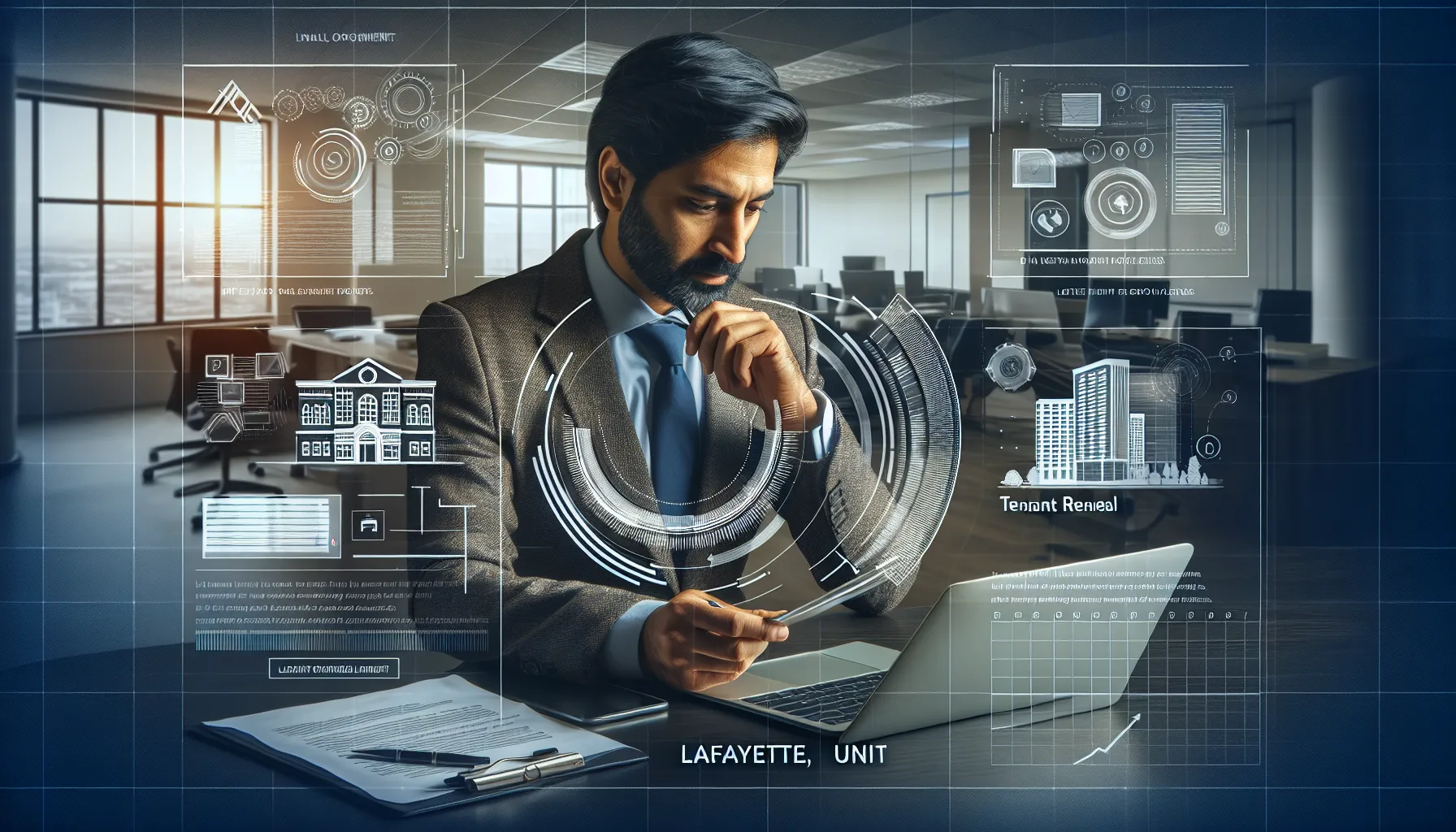Key Takeaways
- Early and clear communication with tenants—ideally 60–90 days before lease expiration—helps reduce uncertainty and streamlines the renewal process in Lafayette.
- Leveraging digital tools for renewal offers, electronic signatures, and online communication accelerates workflow and minimizes paperwork errors.
- Transparent discussions about rent adjustments and detailed fee breakdowns foster trust and minimize disputes.
- Regular property inspections and proactive maintenance during renewal periods improve tenant satisfaction and retention.
- Keeping accurate, up-to-date records ensures smoother renewals, reduces confusion, and supports strong landlord-tenant relationships.
Every lease renewal season brings a mix of anticipation and uncertainty for both landlords and tenants in Lafayette. I know how important it is to keep good tenants happy while also protecting your investment. A smooth renewal process can make all the difference between a stable rental income and the stress of finding new renters.
Have you ever wondered how to make tenant renewals less stressful and more efficient? You’re not alone. Many property owners and managers look for ways to simplify paperwork, communicate clearly, and manage fees—especially when factors like a $100 close out fee or a 7.5% monthly management fee come into play. Understanding the right workflow can help you create a positive experience for everyone involved.
Let’s explore how a thoughtful approach to tenant renewal workflows can save time, reduce turnover, and build stronger relationships with your residents in Lafayette.
Understanding Tenant Renewal Workflows in Lafayette
Tenant renewal workflows in Lafayette help both property owners and residents maintain stability and clear expectations. I recognize that handling lease renewals can feel overwhelming, with many steps from initial notification to final signatures. Each part of the process matters, and missing details can cause unnecessary stress. Do you ever wonder what truly makes lease renewals easier for everyone involved?
I start by gathering lease expiration dates and contacting tenants well in advance. Early outreach, usually 60-90 days before leases end, gives tenants time to consider their options and avoids last-minute rush. This stage often sets the tone for how valued tenants feel.
Next, I review current rental rates, any upcoming city requirements, and the resident’s payment history. Transparent communication about possible rent adjustments or changes in lease terms supports trust. Many tenants appreciate it when I’m upfront and respectful with information, especially when discussing any updates to agreements.
Once terms are set, I send digital renewal forms for faster responses and fewer errors. Electronic signatures help keep paperwork simple. If tenants have questions or need flexibility, I listen and work to find solutions that meet everyone’s needs without causing delays.
After the tenant agrees to the renewal, I complete required reports with the city and handle any maintenance inspections. Scheduled property checks—twice per year—allow me to address minor issues before they grow, reassuring tenants that their homes remain safe and comfortable.
I always keep updated records and confirm that all steps are finished before the new lease period begins. Consistent follow-through reduces confusion for everyone. How could streamlined renewals make your experience better as a property owner or resident?
Processes like these save time, minimize vacancy, and keep resident satisfaction high. Clear workflows let me foster reliable, long-term relationships in Lafayette’s rental community.
Key Steps in the Tenant Renewal Process

Renewing a lease in Lafayette follows a series of planned actions. Each step helps create a smoother experience for both me and my tenants. What renewal challenges have you experienced in your own rental process?
Reviewing Lease Agreements
I start by carefully going over the current lease with a focus on expiration dates, renewal terms, and responsibilities for both parties. Reviewing clauses related to rent increases, maintenance duties, and notice periods lays the groundwork for a fair discussion. This approach helps clarify expectations early and reduces disputes later. Do you check your leases for outdated terms before each renewal, or do you use a standard review checklist?
Communicating with Tenants
Reaching out to tenants well in advance reduces uncertainty and allows more time for discussion. I send written renewal notices about 60–90 days before the lease ends. In these communications, I cover essential details like possible rental adjustments or changes to lease rules. I invite feedback and listen closely to tenant concerns, believing that open dialogue can prevent misunderstandings. How do your tenants prefer to communicate about lease renewals?
Evaluating Market Rates and Rent Adjustments
Before proposing a new lease, I research comparable rental properties in Lafayette. Market data on monthly rent ranges helps me set adjustments that are fair and competitive. I weigh local demand, property improvements, and inflation when deciding on new rates. Clear explanations about rent changes make the conversation less stressful for tenants. Have you noticed any patterns in market trends that affect your renewal rates?
Tools and Technology for Streamlining Renewals

Digital tools help me move tenant renewals forward efficiently in Lafayette. Automated lease management platforms let me send renewal offers, collect electronic signatures, and store signed documents without waiting on paper exchanges. When you think about your time and energy, how much could you gain by handling documents electronically?
Online portals make it simple for tenants to submit renewal inquiries and for me to track communication history. With instant notifications, I address tenant questions right away and keep everyone updated about key renewal steps.
Electronic reminders support timely lease renewals. I set up automatic notifications that alert both tenants and me about upcoming lease deadlines. Have you found reminders make it easier to avoid missed renewals or last-minute decisions?
Mobile-friendly inspection apps let me perform, log, and share routine property inspections with tenants before renewal. These inspections, completed semi-annually or annually, help identify needed maintenance early and encourage open communication.
When managing fees, digital systems record each cost, such as set-up charges or inspection fees, so I can share clear breakdowns with tenants. I often find this transparency reduces confusion and speeds up the renewal decision.
Adopting smart technology speeds up the tenant renewal workflow and simplifies the process for both landlords and tenants in Lafayette. What digital upgrade do you think would bring the biggest benefit to your renewal process?
Common Challenges and Solutions in Lafayette

Maintaining strong tenant relationships while managing lease renewals lands high on my list of priorities. Many landlords in Lafayette encounter delays when tenants wait until the last moment to indicate their renewal decision. Have you ever felt uncertain because a tenant hasn’t replied? This situation can disrupt planning and create scheduling stress, especially if rent adjustments or maintenance projects are planned.
Clear, early communication helps address this common problem. I send out renewal notices 60–90 days before expiration and follow up if there’s no response. Direct phone calls or text reminders sometimes prompt quicker replies. What methods have worked for you to spark timely tenant communication?
Rent adjustments can cause friction during the renewal period. Tenants sometimes push back if they see local rates staying flat, or if market research hasn’t been cited. I resolve this by sharing transparent data about comparable properties and being willing to discuss modest changes. Have you found open conversations about rent adjustments improve retention?
Incomplete paperwork often stalls renewals. In my experience, digital forms with mandatory fields reduce these snags. Electronic signatures let me complete the process faster and keep clear audit trails. How do you keep track of signed documents and versions?
Maintenance concerns can influence tenants’ choices during renewal. Many renters cite delayed repairs or overlooked inspections as reasons not to renew. I conduct semi-annual inspections and respond promptly to maintenance requests so tenants feel heard. How often do you schedule routine maintenance in your renewal workflow?
Managing administrative fees and cost clarity challenges many landlords. When I outline all potential charges upfront and provide detailed fee breakdowns, tenants have fewer questions or complaints. Transparent records can reduce misunderstandings during renewals and move-outs.
Each tenant’s needs differ, but open communication, reliable documentation and prompt attention often keep renewals moving smoothly. Which steps in your workflow need more support?
Best Practices for Successful Tenant Renewals

Open communication with tenants supports renewal decisions. Asking questions like, “What would make you want to stay another year?” shows I value their input and builds trust. Prompt, clear updates about potential lease changes or rent adjustments help prevent misunderstandings.
Initiate renewal discussions 60–90 days before lease expiration. Early outreach gives tenants time to consider options and allows me to address concerns quickly. Tenants tend to respond better when they don’t feel rushed. How far in advance do you reach out to your tenants?
Use written renewal offers with all adjustments detailed upfront. For example, I itemize rent increases or updates to maintenance responsibilities, so tenants know exactly what’s changing. Clarity makes the decision easier for tenants and reduces repeated questions.
Offer digital forms and electronic signing. Many renters want convenience and speed. Electronic workflow reduces paperwork errors and helps me avoid missing signatures or deadlines.
Schedule regular property checks and provide maintenance updates at renewal time. Tenants want to see that I’m proactive. For example, I discuss prior repairs and planned upgrades, which helps set clear expectations for the next lease term. Do you discuss preventive maintenance with your renters?
Provide transparent fee breakdowns. If fees like a $100 close-out or a leasing charge come into play, I show these line by line. Simple tables or lists make fee amounts clear and minimize confusion.
Stay informed on local market rates when proposing rent changes. Tenants appreciate data. If I link rental increases to fair market trends using recent Lafayette examples, tenants perceive the change as justified, not arbitrary.
Keep records updated. Accurate tenant and property information streamlines renewals and minimizes disputes. I check and update contact info, emergency numbers, and maintenance requests during each renewal cycle.
Encourage two-way feedback. I ask tenants what improvements they’d like or if any issues haven’t been resolved. Open-ended questions boost engagement and show I’m committed to a positive rental experience.
Would you like to explore more effective communication tips, or do you want insights on digital lease tools?
Conclusion
Mastering tenant renewal workflows in Lafayette isn’t just about paperwork—it’s about building trust and creating lasting value for everyone involved. I’ve found that a proactive approach and clear communication go a long way in reducing stress and keeping tenants happy.
By focusing on efficiency and transparency, I’m able to protect my investments while offering a smooth experience for tenants. That’s how I ensure my rental properties remain competitive and my tenants feel valued year after year.
Frequently Asked Questions
What is a lease renewal?
A lease renewal is the process where a landlord and tenant agree to extend the existing rental agreement for another term, often with updated terms or rental rates.
When should landlords start the lease renewal process?
Landlords should start the renewal process 60–90 days before the current lease expires to allow ample time for discussions and paperwork.
Why is early communication important in lease renewals?
Early communication helps clarify expectations, gives tenants time to consider renewal options, and can decrease the risk of vacancy or misunderstandings.
What are the benefits of using digital renewal forms and e-signatures?
Digital forms and e-signatures streamline paperwork, reduce errors, and make the process more convenient for both landlords and tenants.
How should landlords notify tenants about lease renewals?
Landlords should provide written notifications outlining the renewal offer, including any changes in rent or terms, and instructions on how to proceed.
How can landlords make the renewal process more efficient?
Landlords can use electronic forms, keep accurate records, communicate proactively, and provide clear breakdowns of any fees.
Why are regular property checks important during the renewal process?
Regular property checks ensure the unit is well-maintained, address any issues before renewal, and help build trust with tenants.
What factors should landlords consider when adjusting rent for renewals?
Landlords should review local market rates, property condition, and recent improvements to determine a fair and competitive rental price.
How does tenant feedback improve the renewal experience?
Tenant feedback provides insights into their needs and concerns, helping landlords address issues and foster long-term positive relationships.
What are common challenges in the lease renewal process?
Common challenges include miscommunication, delayed responses, unclear fee structures, and managing paperwork, all of which can be reduced with proactive planning and technology.
